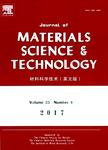Mathematical Modeling of Metal Active Gas (MAG) Arc Welding
Mathematical Modeling of Metal Active Gas (MAG) Arc Welding作者机构:Dep. of Adaptive Machine Syst. Osaka Univ. Osaka 565-0871 Japan
出 版 物:《Journal of Materials Science & Technology》 (材料科学技术(英文版))
年 卷 期:2001年第17卷第1期
页 面:167-168页
核心收录:
学科分类:080503[工学-材料加工工程] 0817[工学-化学工程与技术] 0806[工学-冶金工程] 08[工学] 0805[工学-材料科学与工程(可授工学、理学学位)] 0703[理学-化学] 0802[工学-机械工程] 0801[工学-力学(可授工学、理学学位)] 0702[理学-物理学] 080201[工学-机械制造及其自动化]
主 题:POOL
摘 要:In the present paper. a numerical model for MAG (metal active gas) arc welding of thin plate has been developed. In MAG arc welding, the electrode wire is melted and supplied into the molten pool intermittently. Accordingly, it is assumed on the modeling that the thermal energy enters the base-plates through two following mechanisms, i.e., direct heating from arc plasma and indirect heating from the deposited metal. In the second part of the paper, MAG arc welding process is numerically-analyzed by using the model. and the calculated weld bead dimension and surface profile have been compared with the experimental MAG welds on steel plate. As the result. it is made clear that the model is capable of predicting the bead profile of thin-plate MAG arc welding, including weld bead with undercutting.



